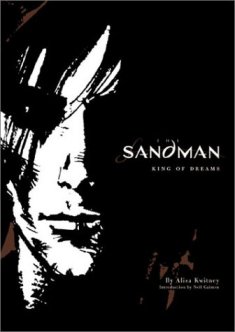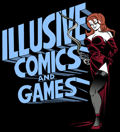"I will show you terror in a handful of dust."
For DC comics readers in the late eighties, that stark warning served as introduction to Neil Gaiman's The Sandman series. Many expected a dark riff on superheroes, as the name had been previously used for two different characters. What we got instead was a book that acknowledged what had come before, but took us into realms unknown and surprising.
A few years later, with The Sandman and Swamp
Thing forming the backbone, DC launched the Vertigo. So
integral is Gaiman's opus to the publisher that when it came
time to celebrate its tenth anniversary, the only way to celebrate
it was with a return to the characters born in Sandman,
in Endless Nights.
All these years after its beginnings, it's easy to lose sight of how wild the series seemed. Far more philosophical than the average horror hero comic (did I just coin a genre?), The Sandman did indeed show us terror and adventure. It delved into the hearts and minds of monsters, and a lonely ruler over the the realm we all share: dreams.
And then Gaiman delivered the most shocking blow of all: this beloved successful series would have an ending. At the time, it seemed heretical. But it proved a canny move - not only did it give the sprawling storyline shape and focus, it meant that characters could learn, grow, change and, yes, die, just as they should in stories. Readers actually have a chance to reflect on what it all meant - and American comics took a step forward.
The Sandman isn't the first work in comics to merit scholarly study. However, when people approach the medium from outside, it's immediately one of those held up with the nervous cry of "see? Comics aren't just for kids!"
Indeed, the ten collections that make up the original series remain consistent sellers, with DC recently announcing brand new covers to give the books a uniform look (and drive some of us back to get them again). Gaiman's return last month achieved a first for "graphic fiction," hitting the top 20 on the New York Times Bestseller List.
Most of this and more gets covered by Alisa Kwitney in her
new retrospective from Chronicle Books, The Sandman: King
of Dreams. In it Kwitney acknowledges that Gaiman's epic
will be the subject of many a literature thesis, but that
alone does not make a beautiful book. For fans and non-fans
alike, this is a beautiful book.
Written with as much love and affection as a critical eye (Kwitney had served as assistant editor on the original series), the book serves as an overview to the entire series. Even though it contains what some might consider spoilers, it's all arranged in a way to help readers dig through the themes and subtexts of each arc. Call it Cliff's Notes for The Sandman, buried in a great collection of art.
Kwitney has done more than just include relevant pages from each segment, though her selections on that front are just right. After discussing why a given artist particularly fit a story, and the thought-processes behind that selection, the actual excerpts give a taste and a tease. They prove the point, and leave us wanting more. For those who think they've seen it all, Kwitney also inserts concept sketches from Gaiman and other artists, giving fans a new glimpse behind-the-scenes.
Images of a few collectibles show up, too. Of particular note are uncensored versions of trading card art deemed too intense. Kwitney gives only a passing glance to these ancillary products, and if the book has a weakness, it's here. In fact, there's little sense of the overall impact of the book on the industry, except for occasional remarks about this or that arc garnering the most interest, or the choice of Marc Hempel alienating a few readers.
But then, Kwitney has come to praise Sandman, not to bury him. In that regard, she succeeds. After reading each chapter and sampling the art, I felt a longing to go digging in my collection and re-read the whole work. There's just enough of P. Craig Russell's work on the classic tale "Ramadan" to leave a reader absorbed and hanging.
It's also accessibly written for those who are strangers to The Endless. Kwitney lays out a good guide and a pretty good case for why The Sandman keeps its steady sales. Though honestly, a new reader might be better served just reading the real thing, this book offers advice as to which arcs serve as the best entry point for different tastes. (The first seven issues, termed Preludes & Nocturnes, read the most like a standard comic book - the elements that non-fans might be most familiar with had not yet fallen into place.)
In general, I'm not a fan of comic book coffee table books
after too many shoddy Marvel products aimed at the trendy,
but The Sandman, King of Dreams does its source proud.
It's a sumptuous book, and a fitting tribute to a writer whose
own young daughter summed him up disdainfully, if Kwitney's
quotation is to be believed: "All you do is look up things
in old books and steal other people's ideas and make things
up!"
Yes. Start here and Neil Gaiman will show you wild imagination in a handful of paper.







